East of Kaitaia, near Doubtless Bay and overlooking the Mangonui Harbour, you’ll find Mangonui School. Currently it has just over 140 students in years 1-6 (ages 5-11) and, established in 1858, it is one of the oldest schools in Aotearoa/New Zealand. Teacher, Ryan Kiely says he can see the sea out his classroom window.
“I moved here a couple of years ago from Hamilton,” he says, “And I’m loving it! There’s native bush on the school property and it’s a 15 minute walk from the school to where the local Pa site is being restored. A kiwi was found there recently and the kids were pretty excited.”
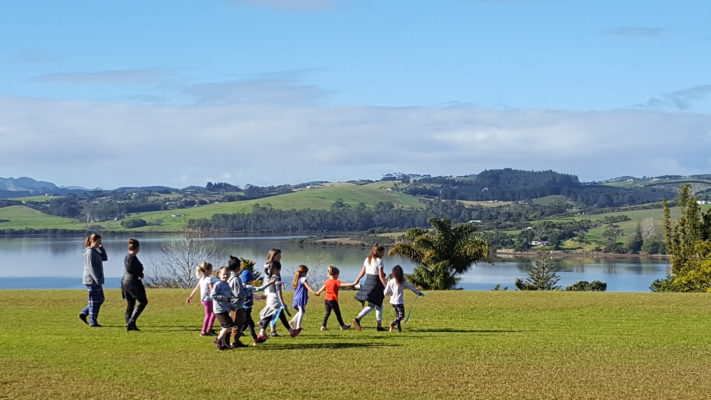
Helping their local kiwi population is one of the main motivations for the children as, with the help of volunteers and their teacher, they set up their trapping operation with funding help from a Predator Free Schools grant.
“We purchased six DOC 200 trap mechanisms, a bunch of wood and some tools – drills, saws etc,” says Ryan. “The children measured an old trap out and drew up plans from their measurements. They use all the tools themselves except the skill saw and they’ve learnt to measure twice and cut once. They’ve hammered all the trap boxes together and cut a few little pieces themselves. They love it!”
The children have also been investigating what introduced predators are hanging out around their school grounds.
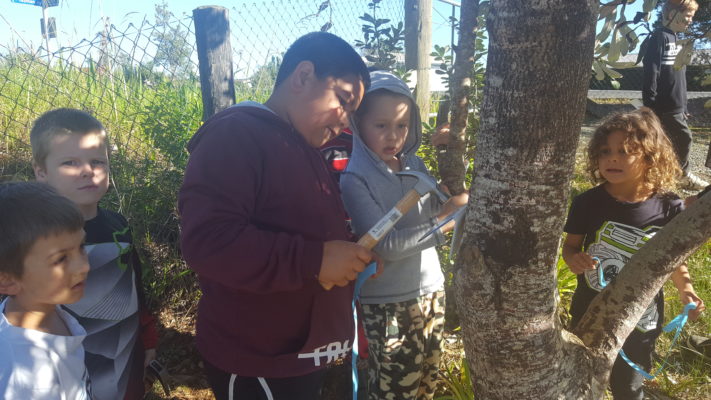
“We’ve put out tracking tunnels at the school and chew cards,” says Ryan. “The younger children like playing with the ink and there were a few little smudges resembling fingerprints when we checked the tracking tunnels. The other big thing is getting them not to eat the peanut butter!”
The inquisitive junior school kids are one of the reasons that the seniors won’t be making their trap boxes brightly decorated.
“We’re keeping them as stealth traps,” explains Ryan, “so that little fingers don’t poke.”
Nevertheless, junior poking aside, the senior school did manage to detect a heap of footprints in their tracking tunnels.
“Rats and mice overran the tunnels,” says Ryan, “And the kids think there may have been weta footprints in there as well. It’s been great for getting conversations going in the school. The juniors are hoping to make a garden for skinks. They want to get boulders and rocks. The children love getting out in nature. It makes learning real.”
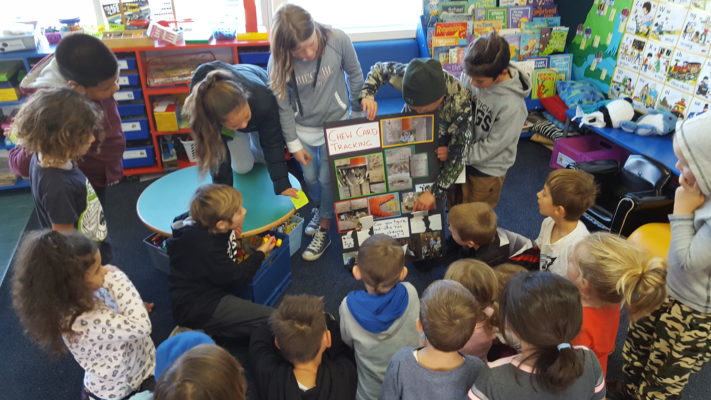
Mangonui School also has a strong Kaitiaki/Guardians philosophy, encouraging children to care for their environment and each other. The older children often work with the younger ones in a tuakana teina relationship, becoming ‘teachers’ themselves. After the tracking tunnel and chew card results came in, for example, the seniors made a big board to display their results.
“They shared it with the juniors to figure out what they’d found and to share their passion.”
With such beautiful surroundings, lessons often involve the outdoors.
“It’s fun,” says Ryan. “It makes teaching and learning a lot more enjoyable getting out with them. The moth plant is rampant here and when we go for walks the boys love to give it a karate chop!”
Mammal predators will soon be getting the chop too. The newly made rat and stoat traps have just gone in.
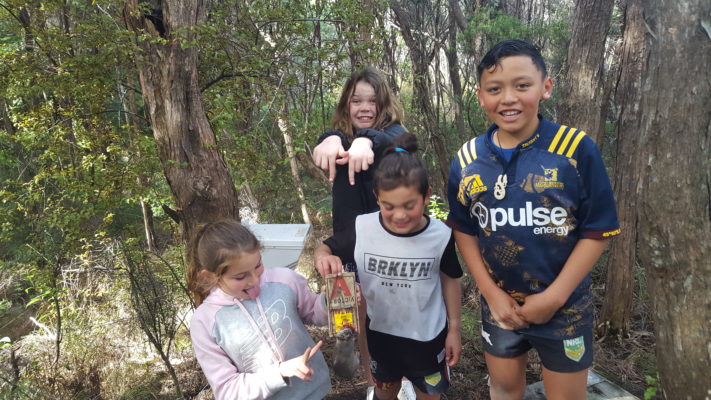
“We caught our first rat today,” says Ryan, “There was a real mix of disgust and excitement on the kids’ faces.”
Some of the children already have some experience of trapping.
“The school works alongside the local ‘Friends of Rangikapiti Pa’ group and some traps were set up at the Pa many years ago with their support. The kids check them once a week,” says Ryan. “A lot of the kids live in the bush and go pig-hunting and possum-hunting. They’re very boisterous boys and girls – they love building things that kill and in turn protect our local wildlife.”
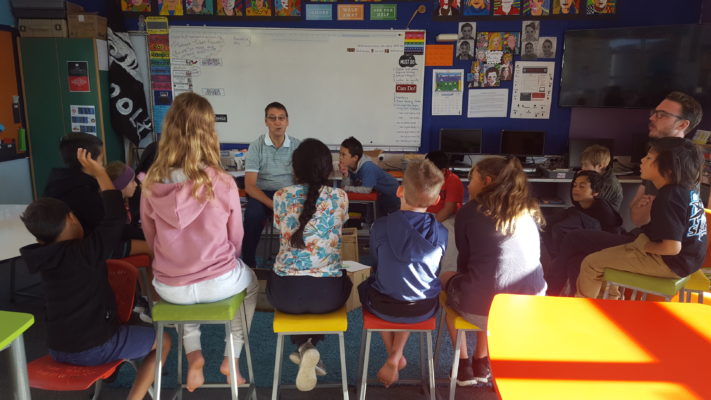
Their conservation effort is also branching out in lots of other directions.
“One class is working with a parent, Glen Bradbury, to trap at the Pa as well” says Ryan, “So there’s a bit of competition building to see who can catch the most. They have 5 traps at the Pa and they’ve caught 3 rats so far this term.”
Native planting is also being carried out with the next lesson focus being on providing native plants for birds to live.
“Since kiwi were found there have been more trees planted at the Pa site and at school. The kids love dirt and repotting. There’s also a lot of plant ID involved and this term we’re building a seedling house to raise native plants. So far the kids have over 400 native seedlings.”
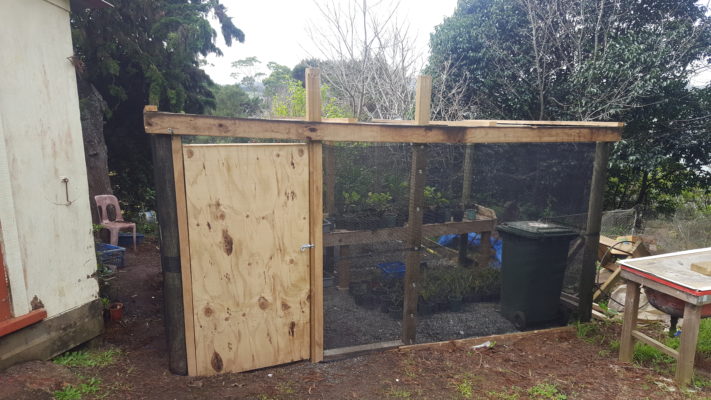
It sounds a lot more fun than being stuck in a classroom, but it also takes a real effort from the children.
“Planting is a lot of hard work for the kids,” says Ryan. “The soil here has a lot of clay, but they always rise to the challenge.”
His pupils also have a very innovative approach to problem-solving.
“They’re quite creative kids,” says Ryan. “We planted some little seedlings and rabbits liked the trees. So the children have been coming up with designs for tree-protectors.”
Ideas include weaving flax and using old cotton t-shirts rather than plastic bags.
“Because our school is right on the ocean we have a big focus on recycling and plastic. There are no rubbish bins at our school. If they bring it to school, then they have to take it home again. It makes everyone really conscious of recycling and what they buy.”
Caring for the environment is an integral part of all kinds of learning at Mangonui School.
“The children did a play recently that was videoed, based on what they’re learning about the environment.”
The children also took the photos of each other that are used in the school newletters and featured in this story.
Check out our school resources section — we’ve searched out a rich assortment of learning resources and gathered them together in one conservation kete.

